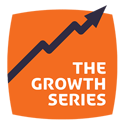
How to Develop a Framework for your Sales Process
Added 07/10/21 -
3
min read
Achieving and maintaining consistent sales is an integral aspect of working in the mortgage industry. If you want to position yourself better to find success in that area, then it’s best to have a plan. Knowing what best practice looks like along your sales process is extremely useful, so perhaps it's time to develop a sales framework.
Read more: Free tools to help you manage your sales pipeline
What is a sales framework?
Sales frameworks, sometimes called sales methodologies, are tools you can use to establish best practice for your sales process. Essentially, they are a set of steps that are simple enough to follow for those with minimal sales experience, while still delivering the insight of more experienced salespeople.
While each sales opportunity does differ in some way, having a framework in place will allow you to get started quickly and stay on the right path throughout the process. Even if you do need to adapt slightly along the way to specific circumstances, you can use sales frameworks to focus your attention on the task in hand.
Read more: Sales skills every broker should master
Why should you develop a sales framework?
Beyond the reasons mentioned above, the simple fact is that developing and using a solid sales framework puts you in a better position to be more successful with your sales. Some specific benefits are:
Clarifying your process
Clarity is always useful! Once you have a real understanding of how your sales process functions, you can develop an understanding of what works and what doesn’t. Think of it in the same way as how A/B testing works in marketing; you can look at the specifics of your efforts and see what impact small changes can have.
Improve training and hiring
Whether you have years of sales experience or you’re new to the trade, working from a proven framework will be beneficial to the outcome of your sales efforts. If you are looking to hire new colleagues, having these processes in place in advance will allow them to hit the ground running regardless of their experience.
Read more: Great training resources for sales
Developing a framework for your sales process
Once you decide that a sales framework will be helpful for you, then you just need to develop one. This requires a few different steps.
Map your sales process
You first need to establish the steps that buyers take on their journey to becoming your customer.
- Define each stage of the process - Look at the journey as a whole and break it down into individual stages. What are the goals of each stage? Who is responsible for them?
- Create a visual map - Structure is important when building a map, so that it’s easy to follow when needed. You can be old-school and take pen to paper, but there are some fantastic digital tools available to help you build out your process visually.
Some of these are:
Understand your buyer’s needs
You’ve now got your sales process mapped out, great! Now you need to find a way to make your sales messaging really connect with your customers. The best way to do that is to understand what your customers’ requirements really are. This research can be undertaken in a number of ways, questionnaires and good old-fashioned conversation being classic examples.
These are the requirements you need to consider:
- Technical requirements - What service do they really need? What is it specifically that you can offer them that they can’t do for themselves?.
- Financial requirements - Ideally, your customers will hope to get good value from using your service. What’s their budget? Can you save them money on their mortgage?
- Personal requirements - We know that purchasing a mortgage is, for most people, an enormous decision which makes a big impact on their life. Make sure you really understand the ins and outs of what your service means to your customers.
Develop methodologies for each stage of your process
So your sales process is clearly mapped and you understand the needs of your clients, at this point it’s time to apply a methodology to each stage. You could work to develop your own tactics on how to approach each stage, but there are also plenty of existing methodologies that could be appropriate. Your chosen methodology should guide whoever is referring to the process on what to do at each stage of the journey.
Examples of existing methodologies:
There are plenty of existing methodologies which you can research and apply, such as:
- SPIN Selling
- Signal Based Selling
- The Challenger Sales Model
- BANTR Sales Framework
Keeping on top of sales is an ongoing effort, but with a framework in place you can help to streamline your process and achieve better results.
Get notified of new content
Related Content
.png)
5 things brokers need to know about the new renters’ reform law
by Jeremy Duncombe
Added 09/12/25 - min read
.png)
Podcast #134 - Mortgage Mentors: What Emotional Intelligence Brings to Mortgages with Clare Beardmore
by Jeremy Duncombe
Added 24/11/25 - min read

AI etiquette and compliance for brokers
by Jeremy Duncombe
Added 17/11/25 - min read

Latest Blogs

GS Live with Heather Murray: AI for non-techies
Added 10/12/25 - 2 min read
.png)
5 things brokers need to know about the new renters’ reform law
Added 09/12/25 - 4 min read

AI etiquette and compliance for brokers
Added 17/11/25 - 3 min read
Want to contribute to the Growth Library?
Get in touch with our Editorial Team here




